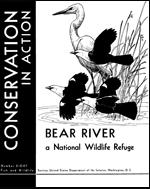United States Fish and Wildlife Service

United States Fish and Wildlife Service: Publications
Population Estimate and Habitat Assosciations of the Long-Billed Curlew (Numenius americanus) in Alberta
Date of this Version
10-2001
Citation
Saunders, Elizabeth J. 2001. Population estimate and habitat associations of the long-billed curlew (Numenius americanus) in Alberta. Alberta Sustainable Resource Development, Fish and Wildlife Division, Albert Species in Risk Report No. 25. Edmonton, AB.
Abstract
A random stratified sample was employed within the Grassland Natural Region to estimate the population of long-billed curlews (Numenius americanus) in Alberta. Sample units were 32km long and 0.8km wide and most were centered along minor roads. A total of 110 sample units were surveyed for curlews between April 30th and June 8th, 2001. From these surveys a population estimate was derived: 11,942 curlew males (95% confidence interval of 9,560 - 14,323) or, assuming an equal sex ratio, 23,884 individual curlews (95% confidence interval of 19,122 - 28,646). As the Parkland Natural Region was not surveyed and there are records of curlews nesting in the region in low numbers, the total Alberta population would be slightly higher than there calculated in this study. Examination of Breeding Bird Survey data suggests that curlew populations in Alberta may be gradually declining, although this trend is not statistically significant.
A positive relationship between long-billed curlews and native grassland was found: More curlews were found in townships with the highest levels of grassland. Across all sample units the number of curlews was positively correlated with the amount of native grassland in the sample unit. Finally, where native grassland was abundant, curlews preferentially selected the native grassland over cultivated fields and tame pasture. However, curlews were also found to occut in areas with little or no native grassland.


Comments
.oxps version of secured filed attached below